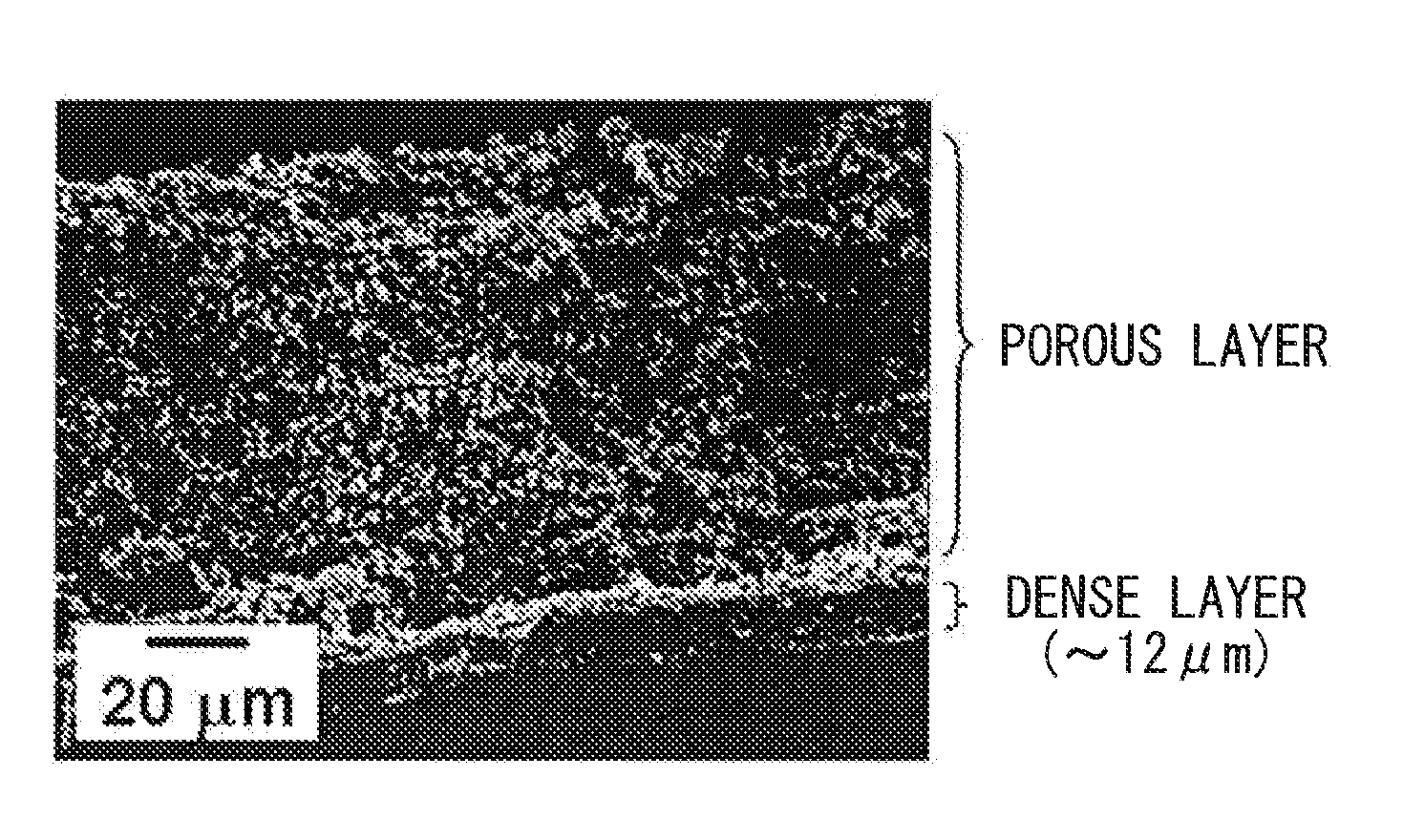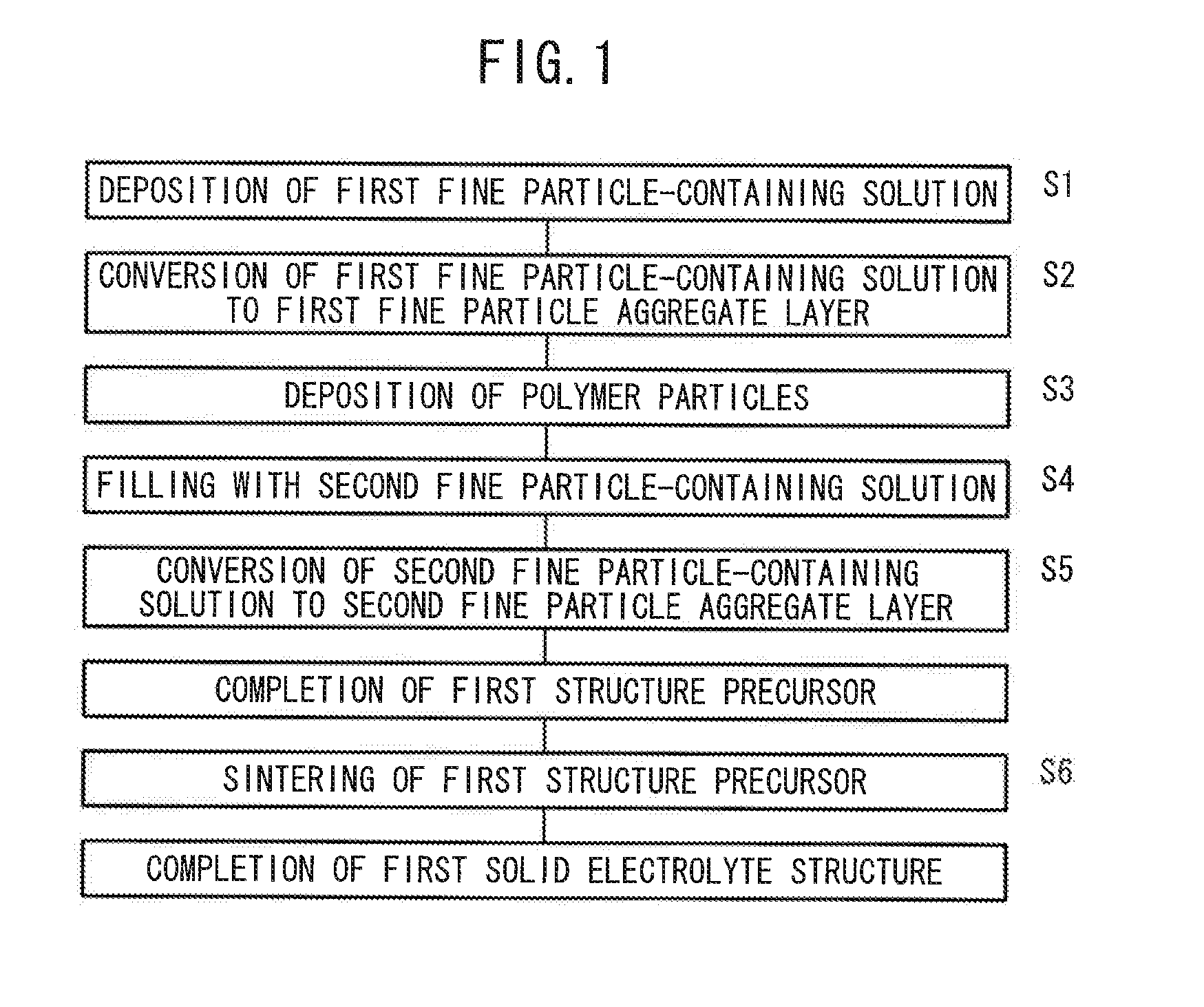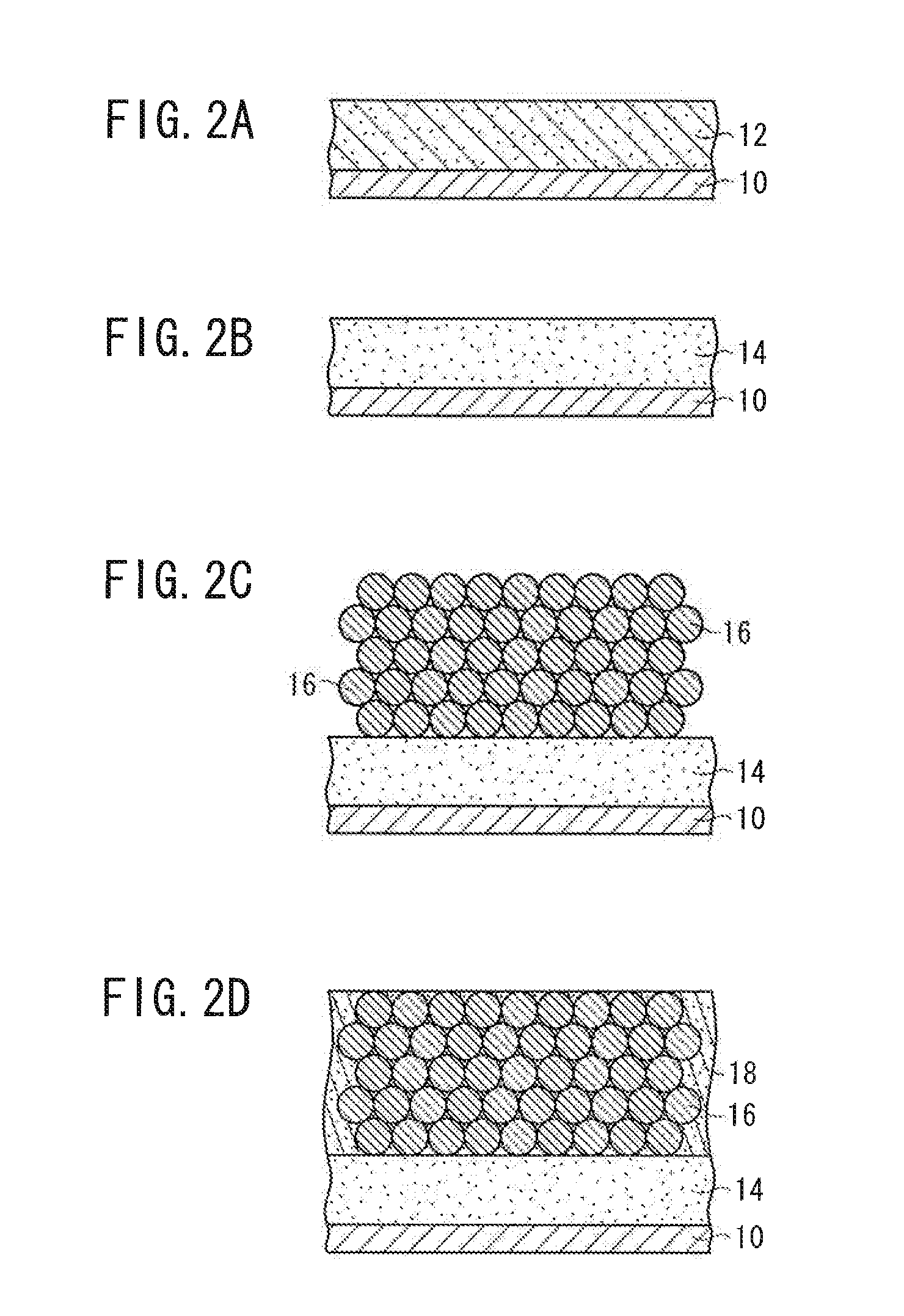Method for producing solid electrolyte structure, method for producing all-solid-state cell, solid electrolyte structure, and all-solid-state cell
a solid electrolyte and electrolyte technology, applied in the direction of electrode manufacturing process, final product manufacture, climate sustainability, etc., can solve the problems of composite electrodes that cannot be easily handled in the process, composite electrodes are often cracked, and the solution leakage, etc., to achieve excellent connection interface
- Summary
- Abstract
- Description
- Claims
- Application Information
AI Technical Summary
Benefits of technology
Problems solved by technology
Method used
Image
Examples
first example
[0157]First Example of a first solid electrolyte structure 24 (see FIG. 3B) produced by the first production method will be described in detail below with reference to FIG. 1.
[0158]In First Example, a filtering unit 70 shown in FIG. 21 is used. In the filtering unit 70, a cylindrical solution supply 74 having a hollow portion 72 is connected to a cylindrical solution discharge nozzle 76. In the connection 78, a solution filter 80 and a packing 82 are fitted to ensure the internal airtightness. The filter 80 has a pore diameter about 1 μm. In the use of the filtration unit 70, a solution containing a mixture of particles is introduced to the solution supply 74 and aspirated through the nozzle 76 under reduced pressure, whereby the solution component is discharged and the particles remain and aggregate on the filter 80.
[0159]In First Example of the first production method, the steps S1 and S2 of FIG. 1 were carried out in one process. A solution containing 9 mg of fine LAGP particles ...
second example
[0162]Second Example of a third solid electrolyte structure 42 (see FIG. 10B) produced by the third production method will be described in detail below with reference to FIG. 7. Also in Second Example, the filtering unit 70 shown in FIG. 21 is used.
[0163]In Second Example of the third production method, the steps S201 to S203 of FIG. 7 were carried out in one process. A solution containing 30 mg of fine LAGP particles having a particle diameter of approximately 0.5 μm, 0.27 ml of a 10% solution of a polystyrene having a particle diameter of approximately 3 μm, 0.1 ml of a polyethylene glycol having a molecular weight of 400, and 5 ml of H2O was prepared, and mixed under ultrasonic irradiation. The solution was introduced to the filtration unit 70 and slowly suction-filtered at approximately 0.1 kPa. At this stage, a first fine particle aggregate layer 14 containing the fine solid electrolyte particles and the polymer particles 16 was deposited on the filter 80.
[0164]The steps S204 a...
third example
[0168]Third Example of a sixth solid electrolyte structure 60 (see FIG. 18B) produced by the sixth production method will be described in detail below with reference to FIG. 16. Also in Third Example, the filtering unit 70 shown in FIG. 21 is used.
[0169]In Third Example of the sixth production method, the steps S501 to S503 of FIG. 16 were carried out in one process. A solution containing 0.20 ml of a 10% solution of a polystyrene having a particle diameter of approximately 3 μm (available from MAGSPHERE INC.) and 20 ml of H2O was prepared, and mixed under ultrasonic irradiation. The solution was introduced to the filtration unit 70 and slowly suction-filtered at approximately 5 kPa. At this stage, an opal-type polystyrene crystal structure was deposited on the filter 80. The deposited polystyrene structure was separated from the filter 80 and maintained at 110° C. for 1 hour to fuse the polystyrene particles, whereby an opal-type polystyrene crystal structure film (see FIG. 17A) wa...
PUM
| Property | Measurement | Unit |
|---|---|---|
| lithium ion conductivity | aaaaa | aaaaa |
| particle diameter | aaaaa | aaaaa |
| particle diameter | aaaaa | aaaaa |
Abstract
Description
Claims
Application Information
 Login to View More
Login to View More - R&D
- Intellectual Property
- Life Sciences
- Materials
- Tech Scout
- Unparalleled Data Quality
- Higher Quality Content
- 60% Fewer Hallucinations
Browse by: Latest US Patents, China's latest patents, Technical Efficacy Thesaurus, Application Domain, Technology Topic, Popular Technical Reports.
© 2025 PatSnap. All rights reserved.Legal|Privacy policy|Modern Slavery Act Transparency Statement|Sitemap|About US| Contact US: help@patsnap.com



